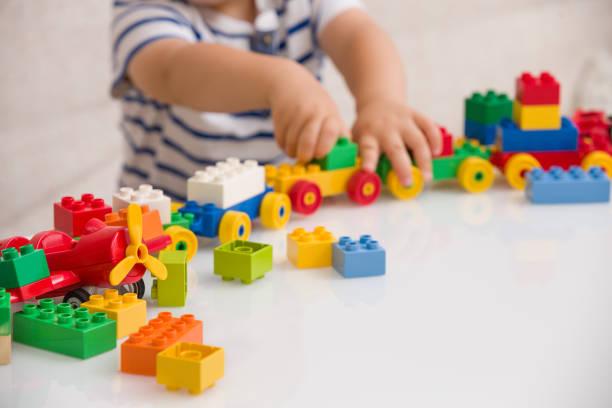Toys Market Dynamics: Demand, Supply, and Regional Insights

🌟 Toys Market Dynamics: Demand, Supply, and Regional Insights
1. Demand: What’s Fueling the Toy Boom?
-
Rising Disposable Income & Expanding Middle Class
Across emerging economies, more families have the means to invest in toys especially educational and premium brands. Parents increasingly see toys as tools for cognitive and emotional development. -
STEM & Educational Focus
Toys that teach coding, robotics, logic puzzles, and science concepts are seeing strong growth. These learning‑oriented toys are thriving in homes and classrooms alike. -
Franchises & Licensed Brands
Global properties like Marvel, Disney, Pokémon, Barbie and Star Wars continue to command immense loyalty and drive sales. Kids (and adults!) gravitate toward characters they love. -
Collectibles & “Kidult” Culture
Nostalgia and fandom culture have transformed collectible toys into serious segments. Blind‑box figures, high‑end designer plushes, and limited‑edition releases attract adult consumers. -
Digital Integration & Hybrid Play
Smart toys blending physical products with apps, AR, IoT features, or voice interaction are redefining play. These hybrid experiences engage tech‑savvy kids in new ways.
2. Supply: Chains, Costs & Constraints
-
Supply Chain Fragility & Seasonal Pressure
Toy inventory must arrive ahead of peak seasons (summer to fall). Disruptions port strikes, weather events, geopolitical tension can unsettle shipping schedules and leave shelves bare. -
Concentration in China, Rising Diversification
Though China still produces the bulk of toys, many companies are shifting production to countries like India, Vietnam and Indonesia to mitigate tariffs and risk. Logistics complexity and import duties remain critical hurdles. -
Tariffs & Cost Cutting
High import taxes have forced brands to redesign toys to cut costs removing batteries, shrinking packaging, simplifying electronics to maintain margins or avoid price hikes. -
Inventory Strategies & Lead Times
With typical lead times of 12–16 weeks, retailers manage tight inventory turnover cycles. Many have lowered stock levels for efficiency yet continue to bring product early to secure arrival windows.
3. Regional Insights: How Local Markets Shape the Story
🌎 North America
-
A mature and competitive market dominated by big brands and licensed toys.
-
Parents prefer educational and interactive toys.
-
Rising tariffs have jolted sourcing strategies and driven price sensitivity among consumers.
🌍 Europe
-
An emphasis on sustainability and eco‑friendly toys resonates strongly here.
-
Clothing brands prioritize toys made from recycled or biodegradable materials.
-
Toy safety regulations in Europe are among the strictest globally, influencing design and supply chains.
🌏 Asia Pacific
-
Among the fastest‑growing regions especially in India and China with growth rates outpacing global averages.
-
Large youth populations, increasing urbanization, and rising incomes fuel demand.
-
Local manufacturing hubs provide competitive pricing, and regional associations help support regulatory compliance.
🌎 Latin America & Middle East/Africa
-
Robust growth emerging from young demographics and expanding middle classes.
-
Promotional media exposure (brand licensing, characters, game shows) is fueling awareness and consumption.
-
Infrastructure expansion in urban centers makes toys more accessible to consumers.
4. Challenges & Bottlenecks
-
Digital Displacement: With screen-based entertainment ubiquitous, traditional toys face stiff competition for children’s attention.
-
Safety & Compliance Hurdles: Strict standards (ASTM, CPSIA, EN71, etc.) raise production complexity and barriers to entry.
-
Counterfeits & IP Infringement: Especially in online marketplaces, unauthorized knock-offs erode consumer trust and brand value.
-
Environmental Concerns: Pressure to reduce plastic use and packaging waste is reshaping product design and materials sourcing.
-
Seasonality & Demand Peaks: Missteps in timing can lead to excess inventory or missed holiday sales surges.
5. Opportunities & Strategic Trends
-
Green & Eco‑Friendly Toys: Sustainable wooden toys, recycled plastics, and minimal packaging designs appeal to environmentally conscious consumers especially in Europe and coastal markets.
-
Innovation in Smart & Connected Play: Toys that interact with apps, respond to voice command, or leverage augmented reality are gaining market share.
-
Customization & Personalization: Products that let users customize names, themes or components are highly appealing and emotionally resonant.
-
E‑Commerce & Omnichannel Growth: Platforms now offer flash sales tied to festivals, targeted bundles, influencer-led marketing, and seamless delivery to both urban and rural regions.
-
Cultural Localization: Brands tailoring toys to local traditions and festivals (e.g. regional characters, culturally relevant designs) gain traction, especially in markets like India and Latin America.
6. Looking Ahead: Navigating the Future
Demand is steadily expanding globally but steering success in the toy market will depend on adapting supply chains, meeting safety and sustainability expectations, and staying ahead of digital and consumer trends. Whether through eco-conscious lines, STEM‑based innovation, or collector‑driven adult demand, the toy industry’s next wave is about combining play with purpose.
Now, more than ever, understanding the dynamics of demand, supply challenges, and regional variation is vital. Companies that pivot smartly will find ample opportunity in this imaginative, resilient and ever‑evolving market.








